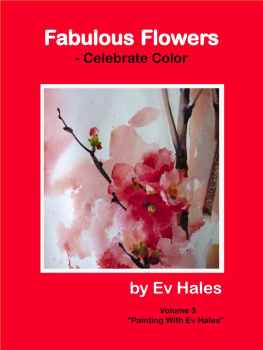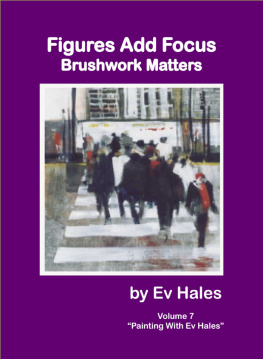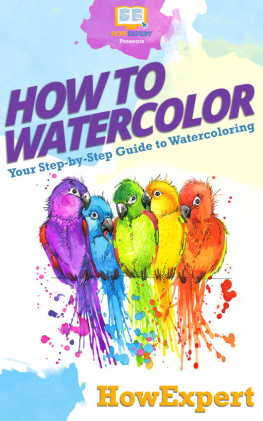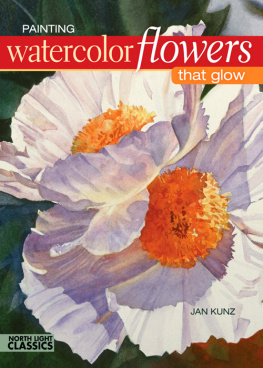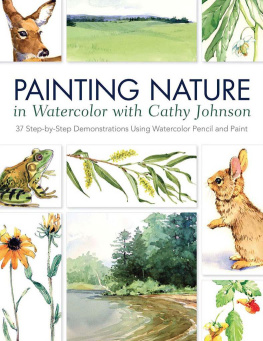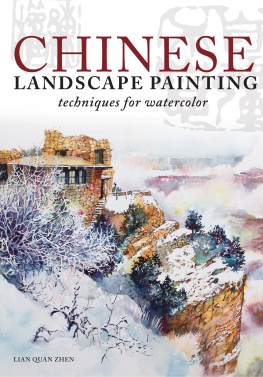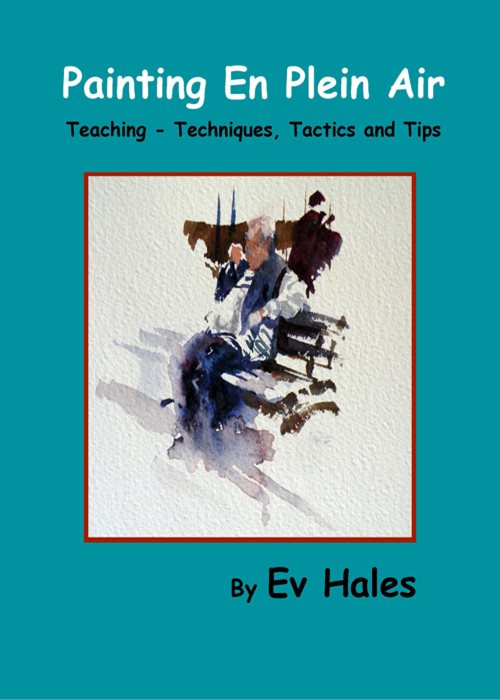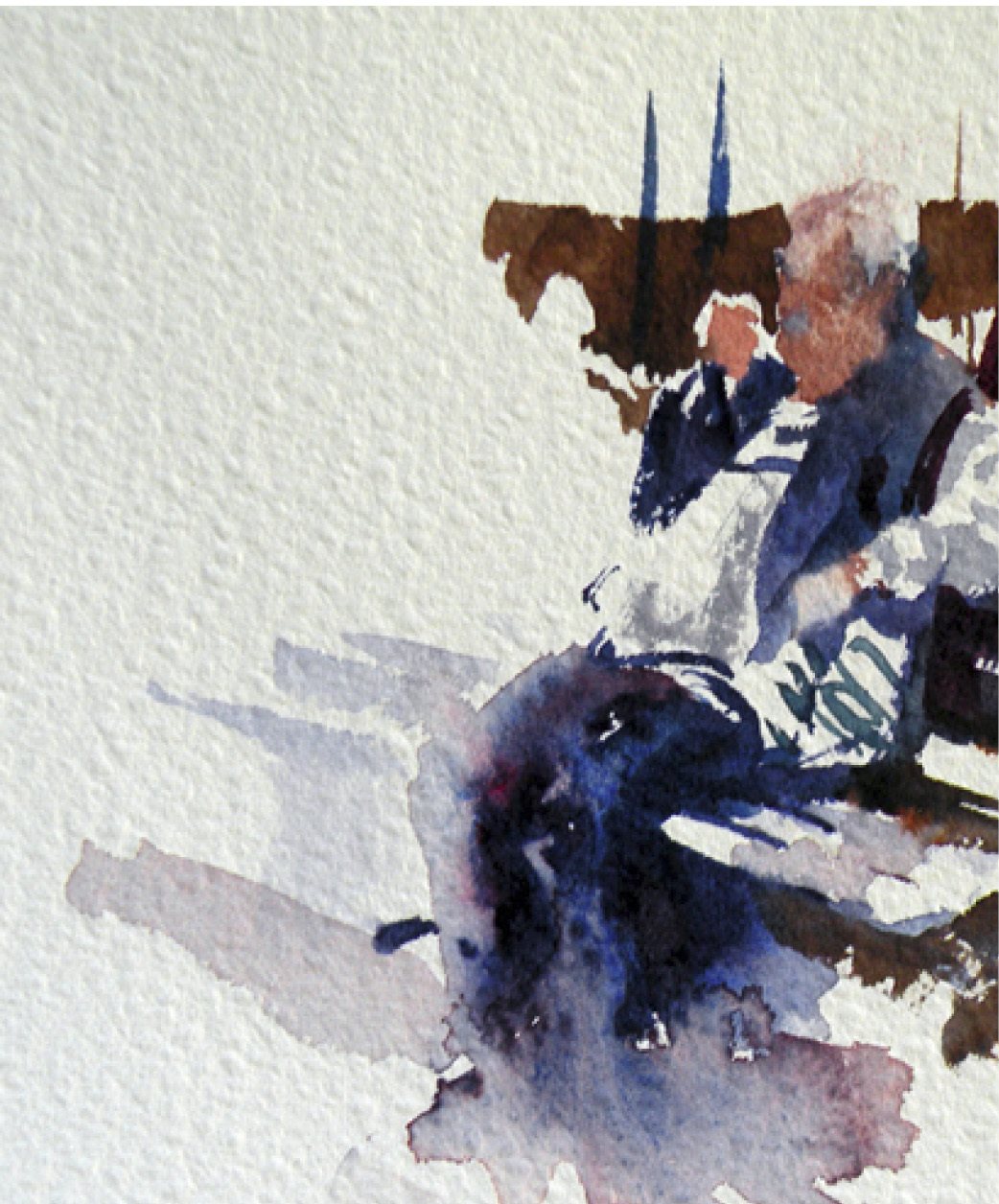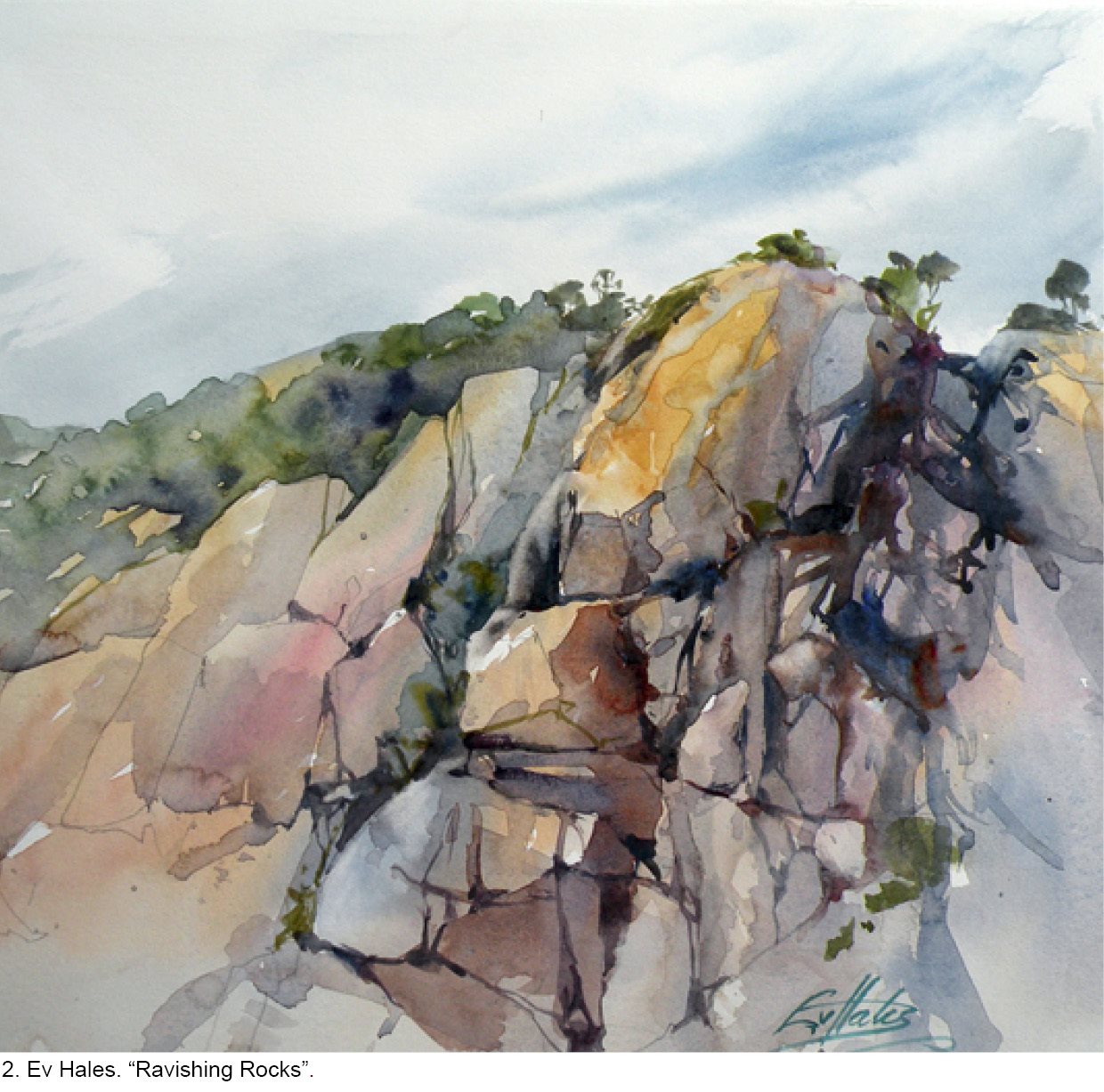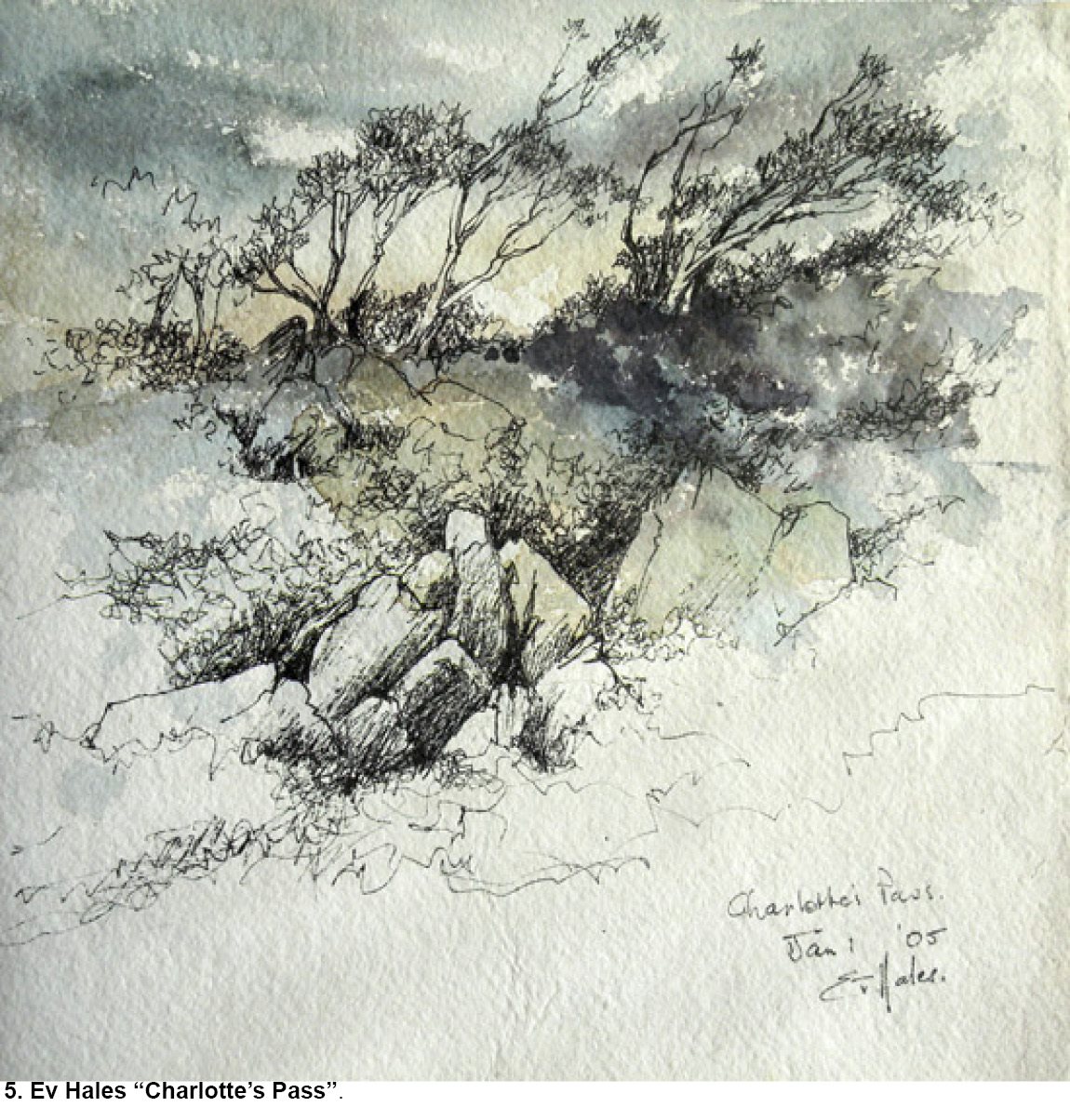Artists enjoy outdoor painting sessions because this is a time when creative energies are replenished and their artistic eye refreshed.
For some painters, working en plein air, without the privacy and shelter of studio walls, can be a traumatic and daunting experience.
More importantly ... What will they say?
How do you actually manage painting en plein air with or without all the equipment that is normally used?
This book explores a variety of strategic approaches for painting on location. The skills discussed will follow through to studio work but I am specifically addressing the challenges that are encountered outdoors when working in the watercolour medium.
Painting tours that I have conducted in both the Northern and the Southern Hemispheres have been the testing ground for these exercises. They have become the basis for my work outdoors wherever I am painting, anywhere in the world.
Why paint on site?
For me, painting on location is an essential part of what I do.
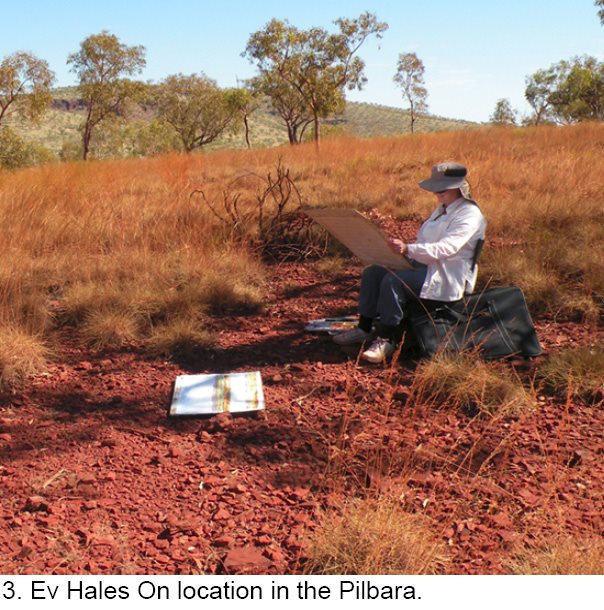
1. Being outdoors forces me to try different techniques because the weather changes constantly.
2. Working en plein air presents new ideas for any subject . Sitting in one place for several hours means I see different light effects. People, animals, birds come into and out of a setting and thus change the focus. These changes give me ideas that I will not find in a single photograph or in the studio.
New skills , often developed from necessity, help me to harness transient effects. This sense of change is the essence of painting outdoors.
Feeling the atmosphere influences what and how I paint. I cannot be tight and refined when the wind is blowing wildly, or I am getting sunburnt on a hot, summer day.
Time constraints teach me to be economical with my mark making.
6. I discover what I can leave out without losing the impact I am after.
7. The sun is constantly moving across the sky, changing where the shadows fall. This forces me to pay attention to which angle I wish to capture. I learn to fix in my mind what I have seen and what I need to notice in order to paint an impression of it. This skill is never developed if you work from photographs, because the whole scene never changes and you have all the time in the world. This is so different to watching the many fleeting happenings that keep occurring in one place outdoors.
My favorite classroom is the outdoors and most of my teaching happens here. Over many years I have developed a range of strategic approaches which work on site. I am constantly refining these processes.
I am sure you will know many of these techniques and if this is the case, just refreshing your view can be beneficial. If you are not familiar with these ideas, using different techniques may change your perception a little. Sometimes even a small change can cause a dramatic divergence in the path you travel. The best part about a journey into painting is that no one knows where they will finish up.
I encourage you to try these exercises and see where they take you - both in terms of your artistic development and in your view of the world around you.
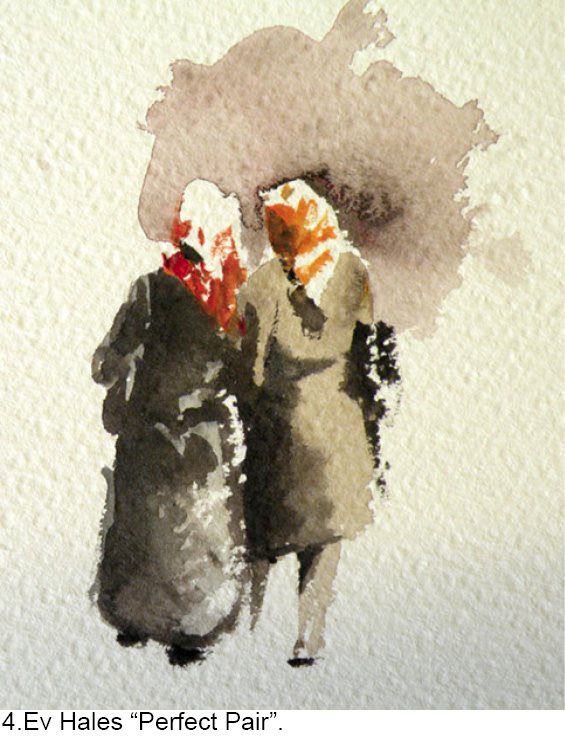
When you first start painting you are thrilled to achieve any kind of likeness on the page. As you become more proficient the challenges become greater and the expectations higher, both personally and from those who know and follow your work. It is easy to fall into the trap of knowing what you like to paint and continually looking for this subject wherever you go. This can mean your paintings finish up looking the same wherever you are in any country, anywhere in the world. To get the best out of an outdoor adventure try to find the essence of a scene - then look at what makes it different to a similar scene in another country or season. This inevitably means pushing into unfamiliar territory - which in turn means looking for new ways to resolve the problems that arise.
The following exercises start with very simple ways of working and finish looking at how to deal with some of the most complex paintings likely to be attempted on location, as well as several worked in the studio as a result of plein air sessions. The examples in the book are taken from my workshops in Portugal, Turkey and Australia.
1. Each different location introduces new subjects and techniques.
Time limitations require different solutions for capturing the essence of the place.
Different weather conditions mean you either have to hasten or slow down your painting technique as the air dries the paint faster or slower.
4. There is some discussion of the kinds of images that are sourced from an on location session and how this differs to what may be chosen in the studio. Do you look for impressions or finished paintings?
5. I also look at how the different locations and studio work spaces inevitably influence the style and scale of the works attempted.
Both places, en plein air and the studio, are of importance to an artists development. I would go so far as to say without the on location sessions awareness of the possibilities of a place would be severally restricted. Similarly an artist needs the time and mental space a studio offers to be able to plan complex pieces.
I hope you find the exercises explored in this book of value for your own painting development.
Most importantly - remember that no one person has the solution for your issues. You need to explore a variety of options and then you will find the skills to allow you to paint what and how you see the world.
Only then are you adding to the rich tapestry of art in the world today.
*This book is the first in a series Painting with Ev Hales. The series includes 10 ebooks. Each ebook explores a specific subject or technique.


